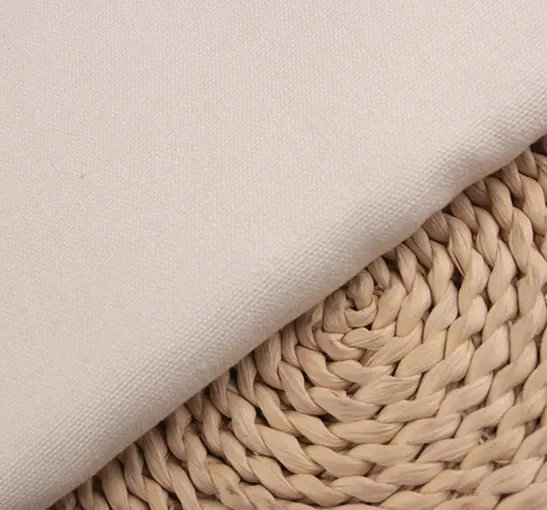Hemp For Fabric: A sustainable textile material
May . 15, 2025 11:12 Back to list
Hemp For Fabric: A sustainable textile material
With the increasing awareness of the environment and the promotion of sustainable development concepts, the textile industry is also actively seeking more environmentally friendly and sustainable raw materials. Hemp For Fabric, as a natural plant fiber, is gradually gaining attention due to its unique properties and environmental advantages, and is expected to play a more important role in the textile industry in the future.

Hemp For Fabric, Derived from the phloem of cannabis plants, it has many excellent characteristics
Firstly, it has excellent strength and durability. Compared to cotton, organic hemp cloth has higher strength, is less prone to wear and tear, and produces fabrics that are more durable, which can extend the lifespan of clothing. Secondly, Hemp For Fabric has good breathability and moisture absorption. Its unique structure enables it to quickly absorb and release moisture, thereby keeping the fabric dry and comfortable, making it particularly suitable for making summer clothing. In addition, Hemp For Fabric also has natural antibacterial and UV protection functions, providing consumers with additional health protection.
In addition to performance advantages, Hemp For Fabric also has significant environmental benefits
Cannabis plants grow rapidly and require much less pesticides and fertilizers during the cultivation process compared to other crops such as cotton, resulting in less environmental pollution. In addition, cannabis plants can absorb a large amount of carbon dioxide, which helps reduce greenhouse gas emissions and alleviate climate change. Moreover, natural hemp fabric by the yard is a renewable resource that can be recycled, further reducing its impact on the environment.
Hemp For Fabric, as a textile material, also faces some challenges
Firstly, the roughness and hardness of hemp fabric products are relatively high, resulting in a rough feel of the textiles and a need for improvement in comfort. Secondly, Hemp For Fabric has poor dyeing performance and limited color expression, which limits its application in the fashion industry. Finally, Hemp For Fabric's processing technology is relatively backward and the production cost is high, making it lack competitiveness in terms of price.
With the continuous development and innovation of technology, these problems are gradually being solved
By improving the textile process, the roughness of Hemp For Fabric can be reduced and the comfort of the fabric can be improved. By adopting new dyes and dyeing techniques, the dyeing performance of Hemp For Fabric can be improved, enabling it to present richer colors. In addition, large-scale production and technological innovation can help reduce the production cost of Hemp For Fabric and improve its market competitiveness.
In summary, Hemp For Fabric, as a sustainable textile material, has excellent performance and environmental advantages. With the continuous advancement of technology and the increasing awareness of environmental protection among consumers, Hemp For Fabric is expected to overcome existing challenges and occupy a more important position in the future textile industry, contributing to the construction of a more environmentally friendly and sustainable textile industry.
Hemp For Fabric FAQs
What is Hemp Fabric?
Hemp For Fabric is a natural textile made from the stem fibers of the cannabis plant (Cannabis sativa). It is renowned for its durability, breathability, and environmental friendliness, and is commonly used in clothing, household items, and industrial materials.
What are the advantages of Hemp For Fabric?
Environmental Protection: Cannabis cultivation requires less water and pesticides, and can improve soil quality.
Durable: Stronger than cotton, softer with washing, less prone to wear and tear.
Breathable and moisture absorbing: suitable for summer wear, with excellent moisture wicking performance.
Antibacterial and mildew proof: Natural antimicrobial properties reduce odors.
What products is Hemp For Fabric suitable for making?
Clothing: T-shirt, jeans, jacket, socks (especially suitable for outdoor and sustainable fashion).
Home textiles: bed sheets, towels, curtains, carpets.
Industrial use: canvas, ropes, environmentally friendly packaging materials.
What are the drawbacks of Hemp For Fabric?
Initial hardness: The new fabric may be rough, but it will become soft after multiple washes.
High price: Due to complex processing, the cost is usually higher than cotton or polyester fibers.
Wrinkle prone: Similar to linen, requires ironing or natural wrinkle style.
How to maintain Hemp For Fabric?
Washing: Machine wash with cold water or hand wash, avoid high temperatures to prevent shrinkage.
Drying: Natural drying to avoid damage to fibers caused by high temperatures in the dryer.
Ironing: Medium temperature ironing, steam can be sprayed to help soften the fibers.
-
Wholesale Custom Pure Linen Womens Halter Top Shirts&Pajamas
NewsNov.17,2025
-
Indian Block Print Napkins | Factory Direct OEM/ODM
NewsNov.17,2025
-
Printed Cloth Napkin – Custom Designs, Bulk & Wedding Ready
NewsNov.10,2025
-
Indian Block Print Napkins – Handmade, Wholesale, OEM/ODM
NewsNov.10,2025
-
OEKO Bamboo Bedding Set: Cooling, Hypoallergenic Comfort
NewsNov.10,2025
-
Indian Block Print Napkins – Handcrafted Linen, Wholesale
NewsNov.10,2025
